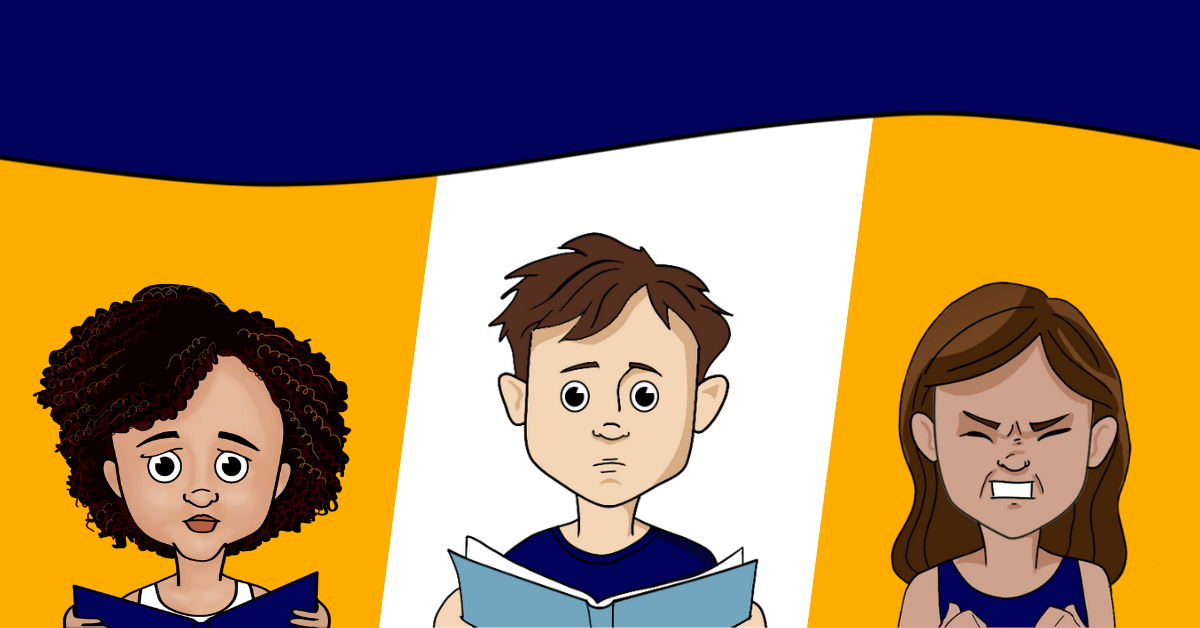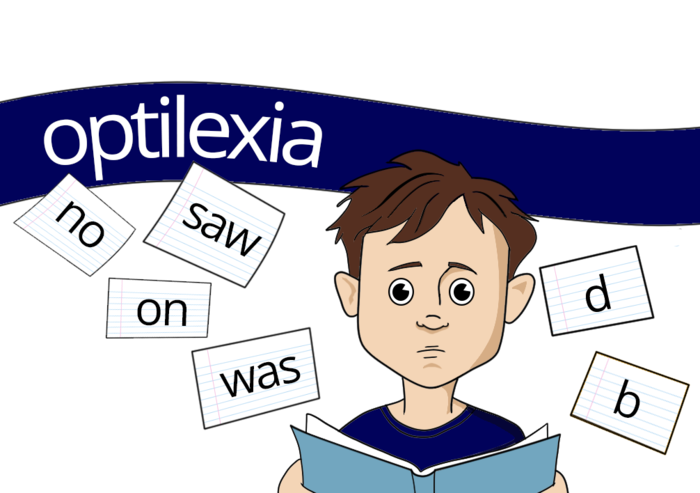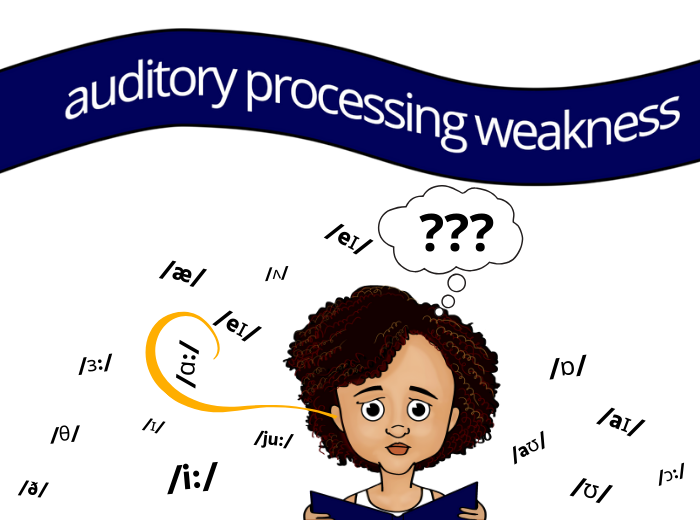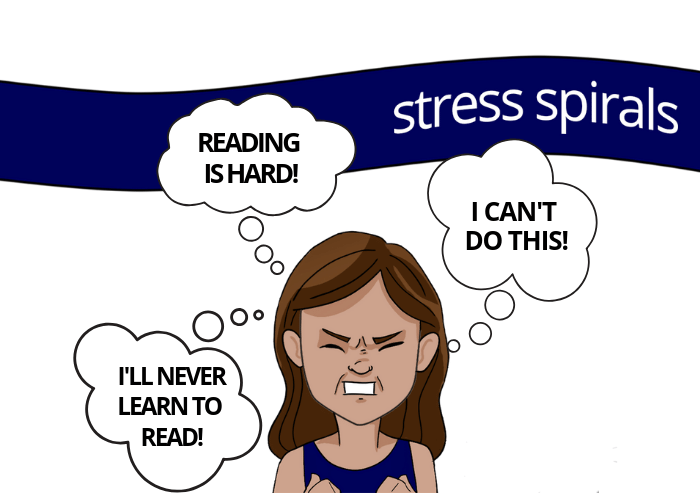Article Library
What actually causes reading difficulty and dyslexia?
by Lydia Cockburn | 13 June 2019

You may not realise it, but several people you know would be unable to read this article out loud to you accurately.
Perhaps you are someone who would struggle to do so. If you prefer, head to this YouTube playlist to watch video explanations.
It’s thought that as many as one in five people in English-speaking countries have some level of dyslexia or reading difficulty.
And yet, most people understand very little about what actually causes it – even those who are suffering!
The problem is, we have a dangerous tendency to talk about dyslexia as if it is an innate brain disorder. According to this idea, these people are born with a brain which is not wired correctly for reading. But actually, the brain differences that scientists report in dyslexics vs. competent readers simply reflect the obvious fact that a brain is doing something different when it is reading well vs. when it is reading badly. See this paper for a more detailed (and fascinating) explanation.
In short, reading is, of course, harder for some people than it is for others – just as singing a tune, or driving a car, is harder for some people than it is others.
But there are reasons behind people’s difficulty with reading, and they are often different from person to person.
This is often true even for two people who both fall under the label of dyslexic. It’s important not to lump all struggling readers together and assume the same issues are at play.
Once the specific issues are identified, a dyslexic (or anyone falling behind their potential) can actually learn to read well, because you can apply the right help for that individual.
Read more about dyslexia here.
The top 4 causes of reading difficulty
So how do you work out the precise cause of someone’s reading difficulty?
Well, over the years, we’ve observed a variety of recurring patterns in the thousands of struggling readers who we’ve helped learn to read on the Easyread system. We recently compiled these into a book: The 9 Main Causes of Reading Difficulty.
To mark its launch, we’ve been exploring four of the most common patterns on our social media channels over the last few weeks.
In this article, I’ll present a summary of these four causes of reading difficulty. If you have seen a child (or teen or adult) struggling, read on to try and work out what’s really going on!
Note: often, but not always, more than one cause of difficulty is relevant to an individual. So it’s worth reading through all of them!
Let’s get started with the most common pattern.

1. Optilexia, or Whole-Word-Sight-Reading
The reading patterns described below are extremely common in struggling readers. In fact, we were seeing them so much that we needed a word to describe it. So we coined the term “optilexia”.
This is when children find themselves recognising whole words by sight when reading, rather than decoding them, usually due to a visual strength.
The symptoms
– Surprising errors/guesses with short, easy words when reading
– Reading long words surprisingly well
– Reversing words (e.g. on/no) and letters (b/d)
– Inaccurate, often phonetic spelling in free writing (but may do well in a spelling test)
– Often visually or artistically gifted
– Difficulty with unfamiliar words, place names, nonsense words
Optilexia is common in children who have a strong visual memory. When first learning to read, they simply find it more intuitive to store words as images in their memory, rather than decoding the letters into their sounds.
When reading a block of text, optilexics are trying to recognise each word as an image, rather than relating the letters to the sounds. When you read in this way, the short words are visually similar and can easily be confused. That’s why you’ll often see an optilexic mixing up small words like of/for/from, then/them/there, was/saw, on/no, etc. On the other hand, a long word is usually more distinctive, and has a lot of context clues. So it’s easier to guess it correctly!
Stuck in this whole-word-recall reading strategy, these children don’t build up strength in the neural pathways for decoding words. This is what is needed to get them reading accurately and fluently.
Their spelling also tends to be very poor, because when reading by whole word recognition, the subconscious mind is not soaking up knowledge of letter-sound relationships, as it does when one reads by decoding.
Just how common is it?
We see these optilexic patterns in at least 80% of struggling readers on our Easyread system. Many, though, will also have something else contributing to their reading difficulty, so keep reading to find out about the other possible factors.
Can optilexia be cured?
Without tailored support, most optilexics will continue to read by sight recognition, and as a result, always experience frustration with reading and spelling. Some will receive a dyslexia diagnosis.
However, these children absolutely CAN switch to a decoding strategy for reading, and catch up with their peers, with the right help. Because optilexia is rooted in a visual strength, we use a visual phonics system to help optilexics learn to decode. Just 15 minutes a day of reading using this method leads to much faster progress for optilexics than traditional phonics methods. They can, and do, learn to read just as well as their peers – if not better!
Read more about optilexia here.

2. Auditory processing weakness
Even if a child has perfect hearing, they may still have some trouble with how their brain processes auditory information.
The signs of auditory processing weakness (APW)
– Struggling to decode words into their individual sounds and blend those sounds together
– Difficulty distinguishing similar sounds
– Possible speech delay
– Often says “what?” or “huh?”
– Struggles with following multiple instructions
– Difficulty hearing the inner sounds in words (such as the “l” in “belt”)
APW is often brought about by temporary hearing loss in children when they are very young, for example, if they have multiple ear infections, or if they have grommets fitted for treating glue ear.
A child with APW (or diagnosed APD) may not perceive the differences between their language’s phonemes particularly well. They may struggle to identify which sounds spoken words are comprised of.
When mentally segmenting words into their phonemes is already hard for someone, decoding written words becomes a very difficult task.
Sometimes this auditory weakness will be offset by the child developing a visual strength, and they therefore develop the optilexia patterns described above. (But you still see optilexia without APW in many children, and vice versa.)
The solutions
When the auditory side of things is tricky for a child, traditional learn-to-read methods will likely fail – not to mention the frustration and resistance that will arise.
That is because traditional methods like phonics rely on auditory instruction, which is difficult for these children.
A visual cues system (such as our own trainertext) makes sounding words out much easier (and less frustrating!) for these learners. Having a visual representation of each sound also strengthens their phonemic awareness.
With enough practice, the decoding will then become automatic for them, so they are no longer slogging through every word, but reading accurately with ease.
Any kind of game which involves manipulating the sounds in words will be good for these learners, too. For example, you can play rhyming games, or “I Spy”, but using the first sound in a word, rather than the first letter.
If blending sounds together to form words is still tricky, even with the help of visual phonics, then that issue will need to be addressed with some simple exercises. Detail of those here!
As with optilexia, children with auditory processing weakness can learn to read very well! In severe cases, the journey can be somewhat slower, but they still get there in the end, with the right help.
3. Eye tracking weakness
This is a very common but lesser-known cause of reading difficulty.
When reading, your eyes have to focus on a word, then jump to the next word. Each jump is called a saccade. It is an incredibly fine-tuned muscular movement controlled by the brain’s cerebellum.
About 25-30% of struggling readers have a weakness with this, making it uncomfortable and difficult for the child to track words across the page during reading practice.
As a result, their reading ability progresses much more slowly than necessary — until you solve the issue.
The symptoms
– Skipping words and lines of text when reading
– Struggles with smaller text
– Misses off word endings
– Reading accuracy improves with single words and larger text
– Gets overwhelmed by a page of text
– Complains of fatigue when reading
– Seems distracted when reading
The solutions
When you see the patterns described above, in most cases you’ll just be dealing with some mild muscular weakness, which can be greatly improved with some simple exercises (like any muscular weakness!)
Here is the exercise routine we’ve found effective for improving eye tracking:
- Sit on a chair, keep your head completely still, and hold your finger or a pencil out directly in front of you at arm’s length, pointing up towards the ceiling.
- Then, move your hand in a circle (as if you were drawing a circle on the ceiling), and follow your finger/pencil with just your eye movements (keep your head completely still!)
- Do just ten circles in a row.
- Repeat this 20-second exercise ten times a day, for ten days.
- Best to watch a video of what we mean, before you start, to make sure you’re doing it right.
This little-and-often exercise routine can make a huge difference to a child’s reading, because it suddenly becomes much more comfortable for them to track words along the page.
You should also see that small text is less of a struggle, once the ten days are up.
If the symptoms persist, you may need to visit a behavioural or developmental optometrist.

4. Stress spirals
If any of the 3 patterns we’ve already covered are an issue for your learner, then it’s likely that reading practice is already a pretty stressful experience for everyone involved.
As humans, we developed a fight-flight-or-freeze response, to increase our chances of survival in the days when fear often actually was a sign of our lives being in danger.
But nowadays, we react in this way for all kinds of stressful situations. For a struggling reader, things at school may be so stressful that even just seeing mum pull the book out from the school bag is enough to start triggering this stress reaction.
The problem is, when the fight-flight-or-freeze response is activated, the brain shuts down the higher thinking areas of the frontal cortex and moves control to the ‘lizard brain’, which is responsible for these instinctive reactions to danger or stress.
So, a child experiencing stress can’t successfully engage the right areas of the brain to get good reading practice done. This means that the stress is actually a cause of reading difficulty in itself – not just an effect.
Allowing stress to escalate at reading time can have an extremely detrimental effect on a child’s progress. It’s important to recognise it and take action to solve the issue.
The symptoms
– Responds badly to errors when reading
– Confidence deteriorates through a reading session
– Avoids reading or refuses to read
– Rising frustration when reading, possibly leading to tantrums
The solutions
To prevent the stress response to reading, you need to do everything in your power to make reading feel easy and fun.
First, keep your practice sessions very short. We find that 15 minutes a day, maximum, is just right. Set a timer and stick to it so that the child can do focused reading in the knowledge that it will be over soon!
Second, choose reading material that is interesting to the learner. Ideally, the text should be at quite an easy level so that they are building confidence with their ability to work words out, rather than struggling through tricky ones and feeling defeated. If the book they want to read includes lots of tricky words, just offer them lots of help with them, or read those words for them. In the meantime they can be building up reading proficiency on the easier words.
Third, in your role of helper, you must make an effort to remain calm and positive, even if your learner is making baffling mistakes. Every time they get a word right (or even so much as a sound!), let them know by saying “yes”, or “good”. The child should hear 5 positives from you for every 1 correction. If they only hear your voice in the context of a mistake, they will feel constantly on edge throughout the reading session, and as a result, they won’t be engaging properly in the reading. It really does slow down progress!
If it’s proving challenging to make book reading fun and easy, you can try out a few lessons of our Easyread system. We use online games to make sure it’s fun, and we use the trainertext visual phonics method to make it easy to work words out (even the tricky ones).
The 5 other possible patterns
There are a few other things that can cause reading difficulty:
- Poor short-term memory
- Contrast sensitivity (a.k.a Irlen’s syndrome)
- Attention deficit
- Fluency block
- No Little Voice
If you want to find out more about those, and get more detail on the top 4 patterns that we have discussed above, you can get a copy of our book, The 9 Main Causes of Reading Difficulty.
Summary
When it comes to reading difficulty, it’s a little more complicated than saying that someone is dyslexic, or “might be a bit dyslexic”.
In fact, there are multiple things that can be causing difficulty for a child learning to read, whether or not they pass a dyslexia test. Above, I’ve described the four most common patterns to look out for.
One individual may show signs of all four, while another might display only one.
So, you have to identify the individual person’s patterns first. Then you can get to work applying the right solutions.
 Lydia Cockburn is an Easyread System Manager and frequent contributor at Helping Children to Read. When not coaching students and families in overcoming barriers to reading, she can often be found playing music or football.
Lydia Cockburn is an Easyread System Manager and frequent contributor at Helping Children to Read. When not coaching students and families in overcoming barriers to reading, she can often be found playing music or football.
